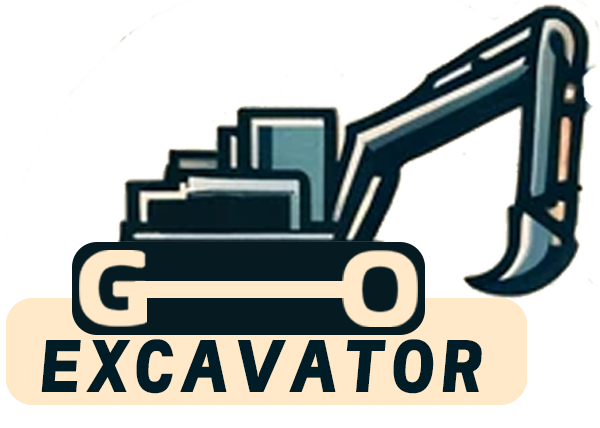
Moving soil is a fundamental task in construction, landscaping, and earthmoving projects. Choosing the right machinery for the job can significantly impact efficiency, cost, and project timelines. Two of the most commonly used machines for soil movement are bulldozers and wheeled excavators. But which one is more suitable for your project?
Understanding the Basics
Before comparing the two machines, it’s essential to understand what each one is and how it functions.
What is a Bulldozer?
A bulldozer is a powerful, track-equipped machine with a large, flat blade mounted on the front. It’s primarily used for pushing large quantities of soil, sand, rubble, or other such material during construction or conversion work. Bulldozers are known for their strength, stability, and ability to operate in rough terrain.
What is a Wheeled Excavator?
A wheeled excavator, sometimes referred to as a rubber-tired excavator, is a heavy construction machine equipped with a boom, stick, bucket, and cab mounted on a rotating platform atop wheels. Unlike the more common tracked excavator, this machine moves on wheels, offering greater mobility on paved surfaces and roads.
Key Features Comparison
To determine which machine is more suitable for moving soil, let’s compare their key features.
Mobility and Maneuverability
Bulldozers
- Tracks vs. Wheels: Bulldozers move on tracks, which distribute their weight over a large area, reducing ground pressure. This allows them to operate on soft or uneven terrain without sinking.
- Speed: Bulldozers are relatively slow-moving machines, designed for power rather than speed.
- Turning Radius: They have a small turning radius due to the ability to skid steer, making them suitable for tight spaces.
Wheeled Excavators
- Mobility on Roads: Wheeled excavators can travel on roads without the need for a trailer, offering excellent mobility between job sites.
- Speed: They can move faster than tracked machines, reaching speeds up to 22 mph (35 km/h).
- Maneuverability: With articulated steering and the ability to rotate the cab 360 degrees, wheeled excavators are highly maneuverable.
Versatility
Bulldozers
- Limited Attachments: Generally equipped with a blade and sometimes a ripper at the rear. Not designed for swapping out multiple attachments.
- Specific Use: Ideal for pushing, leveling, and grading material over a large area.
Wheeled Excavators
- Multiple Attachments: Can be fitted with various tools like buckets, breakers, grapples, and augers.
- Task Variety: Suitable for digging, lifting, trenching, and loading, making them versatile for different tasks.
Efficiency in Soil Movement
Bulldozers
- High Pushing Power: Excellent at pushing large volumes of soil over short distances.
- Grading Ability: Can create a smooth and level surface, ideal for site preparation.
Wheeled Excavators
- Digging Efficiency: Better at excavating and lifting soil rather than pushing it.
- Precision Work: Suitable for tasks that require precise digging and placement.

Advantages and Disadvantages
Understanding the pros and cons of each machine can further aid in making the right choice.
Bulldozers
Advantages
- Stability: Tracks provide stability on soft or uneven ground.
- Power: High pushing power for moving large volumes of soil.
- Durability: Built to withstand harsh conditions.
Disadvantages
- Limited Mobility: Slow and not suitable for traveling long distances.
- Less Versatile: Limited to pushing and grading tasks.
- Transport Needs: Requires a trailer to move between sites.
Wheeled Excavators
Advantages
- Mobility: Can travel on roads, reducing the need for additional transport equipment.
- Versatility: Multiple attachments for various tasks.
- Speed: Faster movement between sites and within the work area.
Disadvantages
- Ground Stability: Less stable on soft or uneven terrain compared to tracked machines.
- Lower Pushing Power: Not ideal for pushing large volumes of soil.
- Tire Wear: Tires can wear out faster, especially on rough terrain.
Ideal Use Cases
The suitability of each machine depends on the specific requirements of the project.
When to Use a Bulldozer
- Large-Scale Earthmoving: Ideal for moving vast amounts of soil over short distances.
- Site Preparation: Perfect for leveling and grading large areas.
- Rough Terrain: Performs well on soft, muddy, or uneven ground.
When to Use a Wheeled Excavator
- Urban Projects: Great for sites with limited space and the need for road travel.
- Versatile Tasks: Suitable when multiple functions like digging, lifting, and loading are required.
- Speed and Mobility: Beneficial when moving quickly between different job sites is necessary.
Cost Considerations
- Purchase Price: Bulldozers and wheeled excavators can vary in price based on size and features.
- Operational Costs: Consider fuel efficiency, maintenance, and operator skill requirements.
- Transport Costs: Wheeled excavators may reduce transport costs due to their ability to travel on roads.
Choosing between a bulldozer and a wheeled excavator for moving soil depends largely on the project’s specific needs. If the task involves pushing and leveling large quantities of soil over an expansive area, especially on rough terrain, a bulldozer is the more suitable choice. However, if the project requires versatility, mobility, and tasks beyond just moving soil—such as digging and loading—a wheeled excavator may be more appropriate.
A Comprehensive Guide to Buying a Excavator Second Hand
Purchasing a second-hand excavator can be a cost-effective solution for your construction or landscaping needs. However, buying used machinery comes with its own set of challenges and considerations. This comprehensive guide will walk you through [...]
Comprehensive Guide to Hyundai Mini Excavators: Features and Prices
Mini excavators have become indispensable tools in the construction and landscaping industries. Hyundai Construction Equipment, a global leader in heavy machinery, offers a range of mini excavators known for their reliability, efficiency, and advanced features. [...]
How to Extend the Service Life of Excavator Parts
Excavators are indispensable machines in the construction and mining industries. They perform heavy-duty tasks that demand robust components and meticulous maintenance. Extending the service life of excavator parts not only reduces operational costs but enhances [...]
Kymron Excavators: Innovative, Sustainable Construction Machinery
In the dynamic world of construction and heavy machinery, Kymron has emerged as a game-changer. Specializing in advanced excavator technology, Kymron is redefining industry standards with its commitment to innovation, efficiency, and sustainability. Company Overview [...]
Bulldozer vs. Wheeled Excavator: Which Machine is Better for Moving Soil?
Moving soil is a fundamental task in construction, landscaping, and earthmoving projects. Choosing the right machinery for the job can significantly impact efficiency, cost, and project timelines. Two of the most commonly used machines for [...]
Why Are Small Excavators Favored? A Comprehensive Guide
In the world of construction and landscaping, efficiency and versatility are key. Among the myriad of machinery available, small excavators have risen in popularity. But what makes them so favored? Introduction to Small Excavators Small [...]




